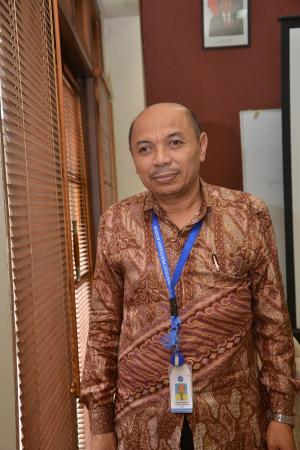One of IPB Professor Holders: Nearly 20 Million Indonesians still Plagued by Hunger

One third of the Indonesian population have received subsidies in the form of rice for the poor (Raskin). Despite this, nearly the other 19.4 million of Indonesian are still starving or unable to get food access (Riskesdas 2015). This was stated by one of the Professor of the Faculty of Human Ecology, Bogor Agricultural University (FEMA IPB), Prof. Dadang Sukandar, in his scientific oration in the Auditorium of Andi Hakim Nasution, Kampus IPB Dramaga, at 27 February 2016. His scientific oration was on "Ketahanan Pangan dalam Pembangunan Gizi Masyarakat = Food Security for the Development of Community Nutrition".
"The definition of hunger for Indonesian is portions of the population who often experienced sustained periods of hunger due to food supply disruptions that cause the lose of their weight within two days," he said.
According to him, efforts have been made by the government Indonesia to improve and enhance food and nutrition for its people. For example, through Bimbingan Massal (Bimas – Mass Guidance) Indonesia had increased rice production in the early 1970s, and reached its rice self-sufficiency in 1984. The second effort was to popularize the concept of ‘balanced nutrition’ with the slogan ’empat sehat lima sempurna – Four Healthy Five Perfect’ to prevent their health. This slogan was later revised to Balanced Nutrition Guidelines (PGS).
For food security effort, self-sufficiency in rice and soybeans will be prioritized as nearly 50 percent of Angka Kecukupan Energi (AKE – Adequacy Score Energy) and protein can be met by these two commodities. In addition, the existence of approximately eight million hectares of rice fields and the development of high-yielding rice varieties will enable the government of Indonesia to reach its effort.
"It is expected that Indonesia will reach its rice self-sufficiency on year 2067. It is estimated that on the 2067, 10 million hectares of rice fields will be reached, rice production will reach 54.4 million tonnes, the population of Indonesia will be around 552.1 million and 53.8 million tonnes of rice will be required. However, the development community nutrition which guarantees that everyone’ needs for food to be healthy won’t easily be met. The high fertility and population growth, growing environmental problems associated with agriculture lands conversion for non-agricultural purposes, climate change, inadequate of infrastructure are great challenges for Indonesia, "he said. (Wied)



